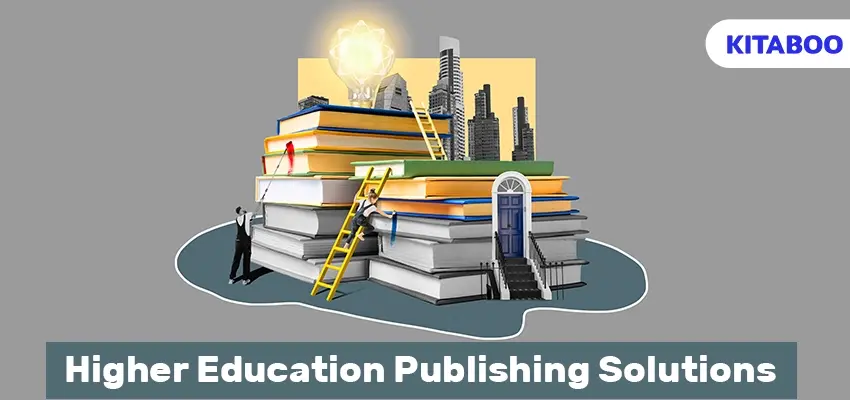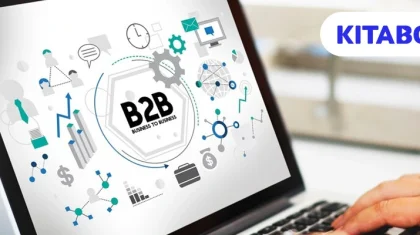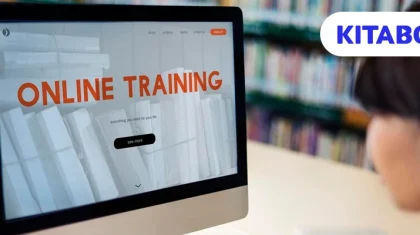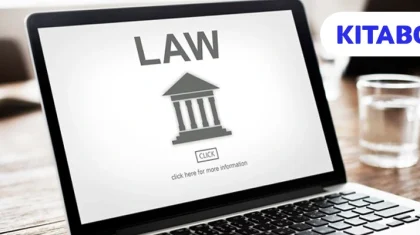
The Role of Higher Education Publishing Solutions in Transforming the Learning Landscape
Higher education publishing solutions are all about creating textbooks and digital content. These solutions play a crucial role in the academic landscape and cater to the needs of higher education students.
They believe in providing personalized educational services according to the needs and preferences of educators, learners, and educational organizations. Their primary aim is to provide a range of services and technologies to create, distribute, and manage educational content.
Some of the finest digital publishing solutions and digital textbook platforms like KITABOO can contribute to the modernization of educational resources, offering innovative methodologies to enhance the teaching and learning experience in higher education institutions.
Let us find out the role of such higher education publishing solutions in transforming the learning landscape and understand the scope of their work!
Table Of Contents:
I. How Higher Education Publishing Solutions Contribute Towards Modern Learning
- Content Creation and Distribution
- Digital Transformation
- Learning Management System (LMS) Integration
- Assessment Tools
- Collaborative Platforms
- Analytics and Reporting
- Continuous Updates and Revisions
- Diverse Content Delivery Methods
II. 10 Ways in Which Publishing Solutions Are Changing the Learning Landscape
- Digital Accessibility
- Personalized Learning
- Data-Driven Decision-Making
- Cost Effective Methodologies
- Blended and Online Learning Experiences
- Creates a More Inclusive Environment
- Adaptive Learning Experiences
- Environmental Sustainability
- Diverse Content Delivery Methods
- Expanding the Global Reach of Higher Education
III. Conclusion
How Higher Education Publishing Solutions Contribute Towards Modern Learning
Before we jump to the conclusion of how higher education publishing solutions create an impact on modern learners, let us understand their key job roles:
1. Content Creation and Distribution
These solutions create and distribute educational content that includes textbooks, eBooks, multimedia, and digital resources. They strive to develop engaging and up-to-date pedagogical materials for various disciplines.
2. Digital Transformation
Higher education publishing solutions strengthen the transition from traditional educational resources to modernized and updated digital formats. This includes eBooks, interactive content, and online platforms that enhance accessibility to various learning styles.
3. Learning Management System (LMS) Integration
Many publishing solutions for higher education integrate with Learning Management Systems, providing limitless access to educational resources within the pedagogical framework. This integration streamlines the learning landscape for all stakeholders.
4. Assessment Tools
Higher education publishing solutions include assessment features such as quizzes, tests, and interactive assignments. Such formative and summative assessments empower educators to evaluate student progress and, based on performance, modify teaching strategies.
5. Collaborative Platforms
These solutions offer collaborative, engaging, and encouraging features like participation in discussion forums, exercising diverse group projects, and making the most of digital collaboration tools. Such platforms eventually contribute to a more interactive learning environment.
6. Analytics and Reporting
Analytics tools provide valuable insights into student performance and engagement. These tools help educators and institutions identify trends, assess the effectiveness of teaching methodologies, and make data-driven decisions for the continuous improvement of students.
7. Continuous Updates and Revisions
Higher Education publishing solutions aim to offer updated and trending educational materials that are relevant and current. They depend on agile updates, market trends, global concerns, real-life issues, and consistent revisions of content.
8. Diverse Content Delivery Methods
Publishing solutions can enhance flexibility in higher education by designing unique ways to organize and deliver content. Most of these methods can be accessed anytime and anywhere and on any device.
Some of the most popular content delivery services include:
- Digital textbooks and eBooks.
- Mobile accessibility and flexibility for students to study on the go.
- Interactive multimedia content like videos, simulations, and multimedia presentations.
- Flexible learning paths are based on individual student progress, allowing for a personalized and flexible learning experience.
- Online learning platforms, recorded lectures and webinars, discussion forums and collaboration tools, and other asynchronous learning opportunities without real-time constraints.
- Open educational resources (OER).
- Modular learning design that allows students to focus on specific topics or skills of interest and provides flexibility in course customization.
- Gamified learning elements to motivate students and provide flexible, self-paced learning experiences.
- Remote assessment tools.
10 Ways in Which Publishing Solutions Are Changing the Learning Landscape
Higher education publishing solutions are transforming the learning landscape in several impactful ways:
1. Digital Accessibility
Publishing solutions for higher education strive to create accessible content by providing options and ensuring compatibility with screen readers.
They ensure that digital content like websites and eBooks has a responsive design, incorporates captions and transcripts, especially for video content, adds alternative text for images, charts, and graphs, and integrates text-to-speech features. They also ensure that digital assessments are formulated in accessible formats with alternative methods.
2. Personalized Learning
Publishing solutions can significantly enhance personalized learning experiences for students in higher education by using data analytics to assess individual student performance. It becomes easy for them to adjust the learning path based on their strengths, weaknesses, and learning preferences of higher education learners.
The publishing solutions can thus use LMS and content platforms to deliver customized content to students. The publishing solutions can also integrate artificial intelligence (AI) algorithms to analyze students’ past interactions, implement individualized learning plans for students, and create engaging learning modules that allow students to progress at their own pace.
3. Data-Driven Decision-Making
Publishing solutions can implement learning analytics tools that track student engagement, performance, and behavior and even evaluate the effectiveness of assessments and exams. They can identify which materials are most effective and which may need improvement.
They can employ predictive analytics to forecast student success, analyze student engagement in various educational activities, use digital platforms to collect feedback from students and faculty and evaluate the utilization of educational resources.
4. Cost Effective Methodologies
Publishing solutions can move from traditional printed textbooks to digital formats and leverage OER, which can significantly reduce the cost of course materials for students.
Further, they can implement print-on-demand options for educational materials or use cloud-based publishing solutions to reduce the need for physical infrastructure and maintenance costs. The incorporation of eBooks, multimedia content, and interactive learning materials helps replace costly physical resources.
5. Avenues for Blended and Online Learning Experiences
Publishing solutions empower educators to create interactive and engaging digital content, centralize content delivery and assessments, and offer digital textbooks that are accessible across devices.
They can provide virtual labs and simulations that replicate real-world scenarios and facilitate real-time feedback on assessments and assignments, making learning resources easily accessible on mobile devices.
6. Inclusive Environment
Publishing solutions can ensure that all digital content is designed and formatted to be accessible to all students. They offer content in various formats to accommodate diverse learning preferences.
They further provide multilingual support for educational content, apply universal design principles, and ensure that digital platforms have user-friendly interfaces.
7. Adaptive Learning Experiences
Publishing solutions can significantly track and analyze student performance and deploy specialized adaptive learning platforms that adjust content and assessments based on individual student progress.
Such paths help them to analyze each student’s strengths, weaknesses, and learning preferences and offer immediate and targeted feedback on assessments and assignments. They can facilitate peer-to-peer learning and collaborative problem-solving.
8. Environmental Sustainability
Promoting the use of digital textbooks reduces the demand for paper, which eventually alleviates the environmental impact of printing and shipping traditional textbooks.
Digital textbook platforms like KITABOO thrive on freely accessible learning resources, which minimizes the need for printing and reduces resource consumption. This approach reduces excess inventory, minimizes paper waste, and supports a more sustainable print model.
9. Diverse Content Delivery Methods
Publishing solutions can offer course materials in digital formats, allowing students to access content anytime, anywhere, and on various devices. They can incorporate interactive elements like videos, simulations, and multimedia presentations, along with centralized access to course materials, assessments, and communication tools.
Furthermore, they can facilitate online discussion forums, group projects, and collaborative tools that offer asynchronous learning options.
10. Expanding the Global Reach of Higher Education
Publishing solutions allow students globally to access learning materials from any location with internet connectivity.
With centralized educational resources, assignments, and communication, they aim to offer multilingual support for digital content and platforms, ensure that digital content adheres to universal design principles, and archive lectures for on-demand viewing, allowing students in different time zones to access course content at their convenience.
Further, they form partnerships and collaborative initiatives with international universities, enabling students to participate in joint programs, research projects, or exchange programs.
Conclusion
Higher education publishing solutions in modern education are essential for creating a dynamic, accessible, and personalized learning environment that plays a crucial role in shaping the modern learning landscape.
Moreover, publishing solutions contribute to data-driven decision-making, providing valuable insights for educators and institutions to refine and optimize their teaching methodologies continually.
KITABOO, a digital textbook platform, believes in the adoption of eco-friendly digital resources that help shape a dynamic and inclusive learning environment, preparing students for the challenges of the future.
To learn more, write to us at contact@kitaboo.com.
Discover how a mobile-first training platform can help your organization.
Kitaboo is a cloud-based platform to create, deliver & track mobile-first interactive training content.



